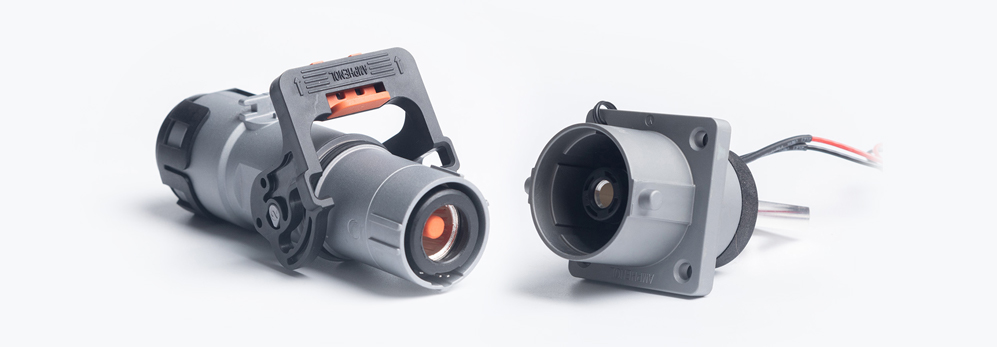Electric vertical take-off and landing (eVTOL) aircraft with electric and hybrid-electric engines are the future of air travel as manufacturers have begun to overcome previous technological limitations, setting the stage to completely transform how urban residents traverse their cities.
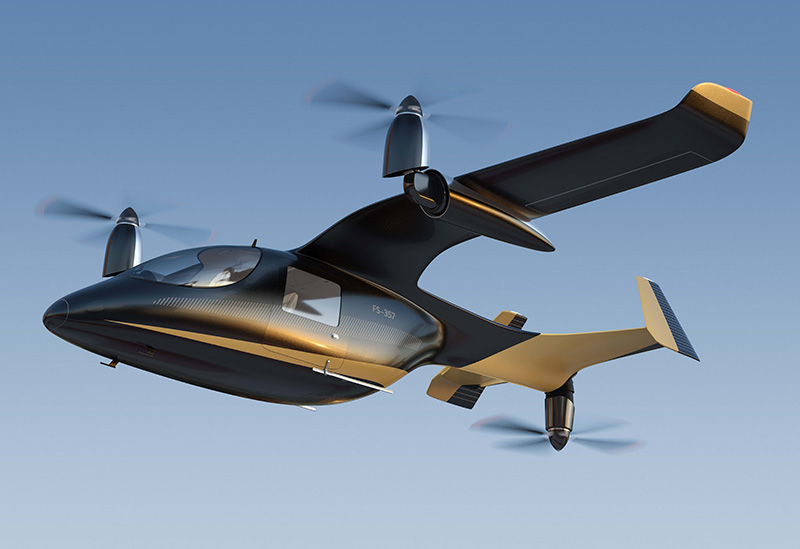
Just as ground vehicles have transitioned from gas powered to hybrid-electric to electric vehicles in recent years, commercial aircraft manufacturers are looking to do the same to increase efficiency, reduce emissions, and revolutionize short-to-medium range urban air travel. But changing the way we power aircraft presents an all-new set of challenges. Connectors need to be able to handle higher voltage levels than previously seen in the commercial air market while also being able to work at the necessary altitude requirements.
Development isn’t showing any signs of slowing down as manufacturers seek to meet these challenges head-on. By 2030, the cargo and passenger market for this revolutionary new class of electric aircraft is expected to exceed $1 trillion as a wide range of players, from established manufacturers to startups, seek to corner the market.
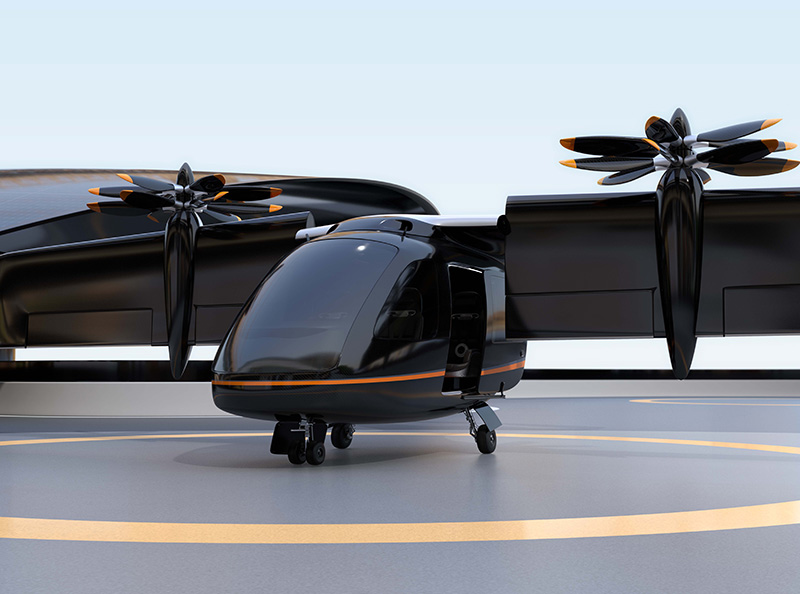
The next evolution in urban mobility
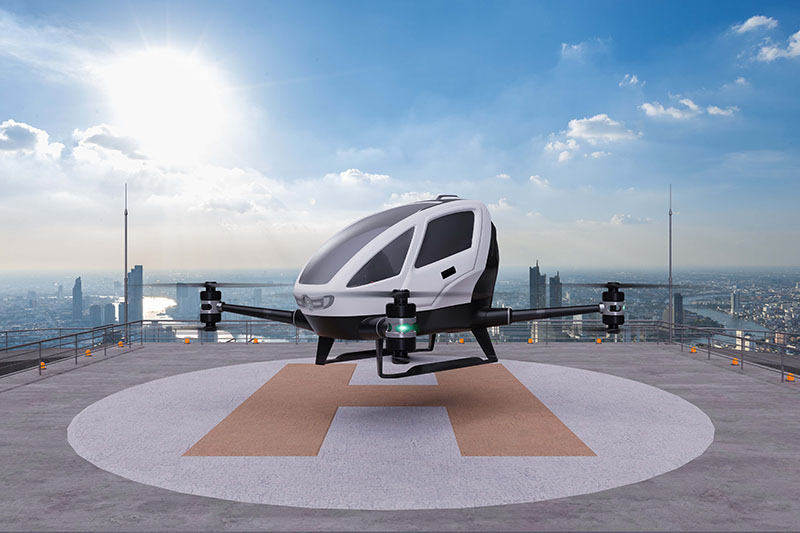
As large urban population centers attempt to reduce congestion on their streets, they’re turning to new and innovative solutions. One method is turning to urban air mobility. Currently, helicopter taxis are in use in Sao Paulo, New York City, and Mexico City among other locations, but helicopters remain cost prohibitive, loud, and aren’t ecologically responsible.
eVTOLaircraft are a promising solution to urban congestion. Many are fully electric and use multiple rotors to reduce noise and increase system redundancy, and their carbon footprint is significant smaller than contemporary aircraft.
What’s next for eVTOL aircraft?
eVTOL technology is still in the developmental phase, though multiple organizations have produced working prototypes with plans to ramp up production and mainstream use within the next few years. When eVTOL aircraft begin to be rolled out in major cities for civilian travel, flights are likely to run on a fixed schedule akin to municipal buses at first but could progress quickly to on-demand service.
In 2025, eVTOL company Joby Aviation is expected to launch eVTOL air taxi service in select markets and operate it similarly to existing ride-hailing services such as Uber. The major difference is riders will hail an aircraft at a helipad, before being flown elsewhere in the city or to an airport where they can travel further afield. Joby Aviation acquired Uber’s air mobility division Uber Elevate in 2020.
Joby Aviation, which was provided airworthiness criteria from the Federal Aviation Administration (FAA) on its JAS4-1 eVTOL aircraft in early November, is just one eVTOL company in a space with a lot of contenders. The eVTOL industry has received investments from airlines such as United and American in recent years, as well as aerospace corporations such as Airbus and many smaller manufacturers such as Joby, Archer Aviation in San Jose, and Volocopter in Bruchsal, Germany.
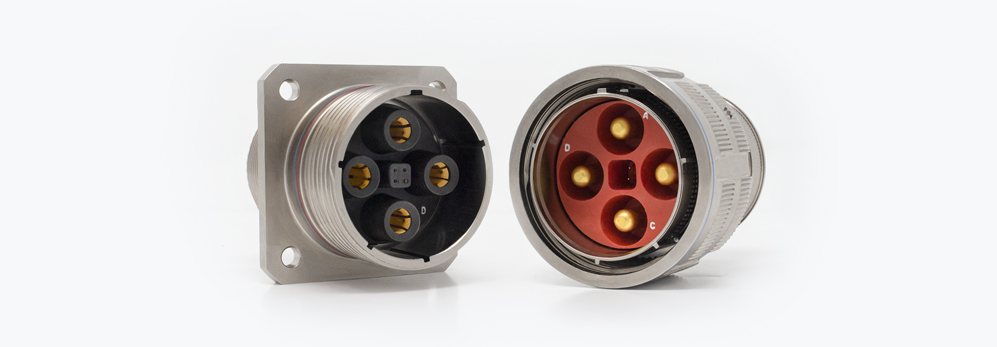
Urban air mobility requires high power
Achieving this revolution in urban air mobility will require a massive amount of power. While the energy efficiency of eVTOL aircraft is designed to be better than terrestrial vehicles, eVTOL charging requirements are projected to be lofty and electric powertrain systems will require large amounts of power and voltage.
eVTOL aircraft will be charged at a specialized station called a vertiport when they see mainstream adoption. These vertiports will likely house several gates and could feasibly require multiple megawatts of power.
And if eVTOL travel is going to become a major method of transportation in urban areas, these aircraft need to be able to provide frequent flights. This means fast-charging solutions will need to be developed that can transfer vast sums of power quickly and safely.
Amphenol Solutions
Amphenol Aerospace manufacturers a variety of high power and high voltage connectors featuring different shell styles and mating styles that can help meet the stringent demands of your high power and high voltage eVTOL applications.
Amphenol’s high-power options include the High voltage 38999 connectors that have been tested up to 1200 VAC/1500 VDC to remain partial discharge free at 50,000 feet. Safety interlock circuitry is managed using size 22 contacts in a last mate, first break mating sequence.
If your application requires a different shell style, Amphenol’s highly customizable High Power 5015 connector with advanced contacts features more than 25 available tooled insert arrangements and a current carrying capacity of 50 to 1200 amps. The High Power 5015 provides 40-50 percent more current carrying capacity than standard 5015 connectors.
For high voltage needs, Amphenol’s Voltarius High Power Interconnect System has a voltage rating of 1000 VDC at sea level and is available in single pole or multi-pole arrangements.
Visit our High Power Product section for a full lineup of high power and high voltage connector options.
